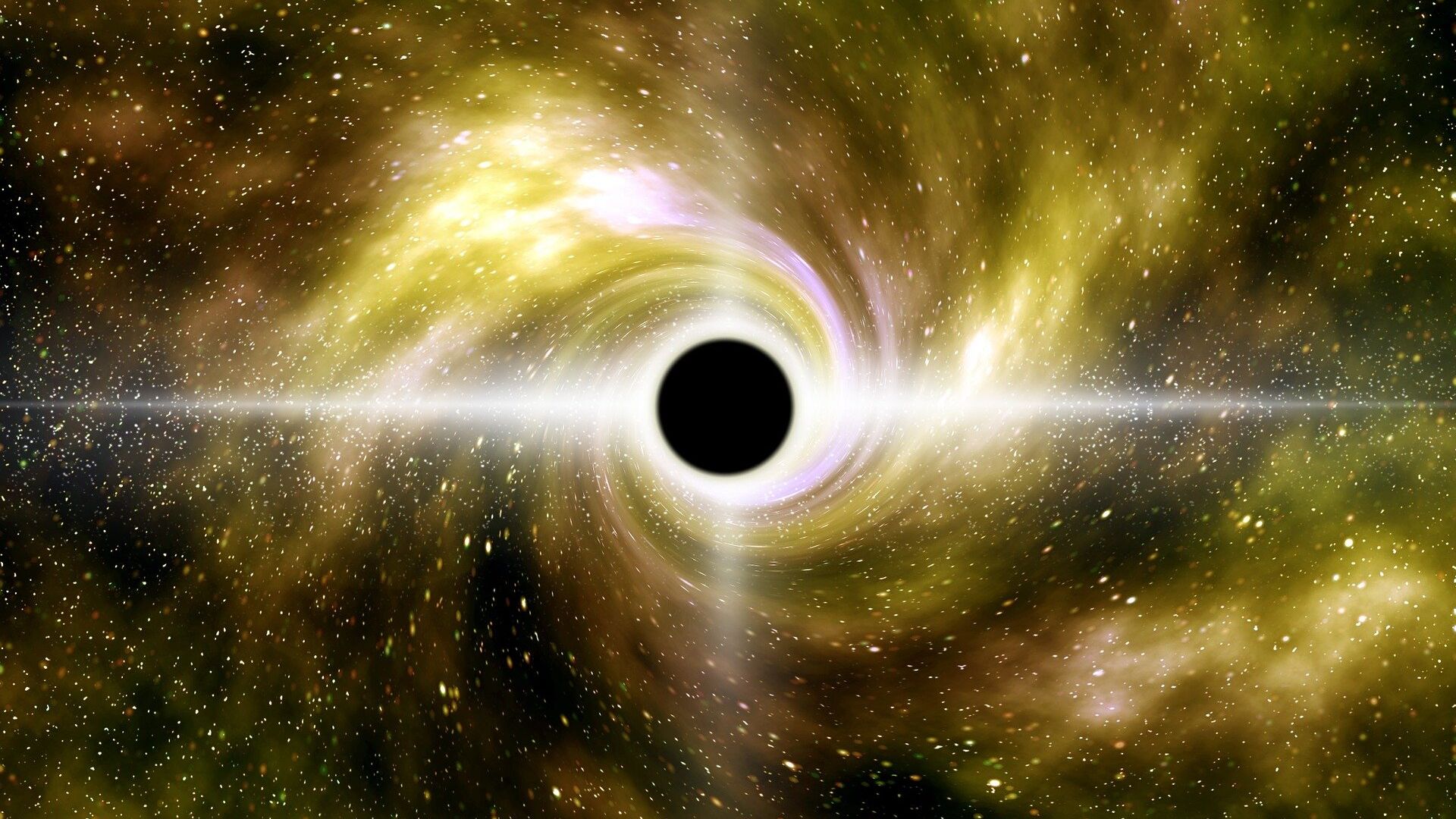https://sputnikglobe.com/20211202/massive-black-hole-about-as-massive-as-the-milky-ways-found-in-tiny-galaxy-1091210150.html
Massive Black Hole 'About as Massive as the Milky Way's' Found in Tiny Galaxy
Massive Black Hole 'About as Massive as the Milky Way's' Found in Tiny Galaxy
Sputnik International
The size of the newly-found black hole appears to be on par with the black hole at the heart of our galaxy, even though the host galaxy of the former is much... 02.12.2021, Sputnik International
2021-12-02T19:30+0000
2021-12-02T19:30+0000
2021-12-02T19:30+0000
university
science & tech
texas
discovery
black hole
https://cdn1.img.sputnikglobe.com/img/106962/08/1069620868_0:419:1920:1499_1920x0_80_0_0_5cd410a539835e3234c17e8656617804.jpg
An unusually massive black hole has been discovered by astronomers at the University of Texas at Austin’s McDonald Observatory, at the center of Leo I, a dwarf satellite galaxy of the Milky Way.According to a university website, the astronomers set their sights on Leo I because it “does not contain much dark matter”, unlike other dwarf galaxies that orbit the Milky Way.The team’s observations, however, led them to a surprising discovery in the form of a black hole that appears to be as massive as the one that resides at the heart of our own galaxy, despite the fact that Leo I is a much smaller galaxy than the Milky Way.As María José Bustamante, a UT Austin doctoral graduate who leads the team, remarked, their discovery may affect astronomers’ understanding of galaxies evolution, since “there is no explanation for this kind of black hole in dwarf spheroidal galaxies.”The team’s observations were carried out with the help of an instrument called VIRUS-W that was built by a team at Max Planck Institute for Extraterrestrial Physics, and which is apparently “the only instrument in the world now that can do this type of dark matter profile study.”
https://sputnikglobe.com/20211026/russian-scientists-explain-how-primordial-black-holes-could-have-formed-1090217057.html
texas
Sputnik International
feedback@sputniknews.com
+74956456601
MIA „Rosiya Segodnya“
2021
News
en_EN
Sputnik International
feedback@sputniknews.com
+74956456601
MIA „Rosiya Segodnya“
Sputnik International
feedback@sputniknews.com
+74956456601
MIA „Rosiya Segodnya“
university, science & tech, texas, discovery, black hole
university, science & tech, texas, discovery, black hole
Massive Black Hole 'About as Massive as the Milky Way's' Found in Tiny Galaxy
The size of the newly-found black hole appears to be on par with the black hole at the heart of our galaxy, even though the host galaxy of the former is much smaller than the Milky Way.
An unusually massive black hole has been discovered by astronomers at the University of Texas at Austin’s McDonald Observatory, at the center of Leo I, a dwarf satellite galaxy of the Milky Way.
According to a university website, the astronomers set their sights on Leo I because it “does not contain much dark matter”, unlike other dwarf galaxies that orbit the Milky Way.
The team’s observations, however, led them to a surprising discovery in the form of a black hole that appears to be as massive as the one that resides at the heart of our own galaxy, despite the fact that Leo I is a much smaller galaxy than the Milky Way.
“The models are screaming that you need a black hole at the center; you don’t really need a lot of dark matter,” said Karl Gebhardt, one of the astronomers involved in the study. “You have a very small galaxy that is falling into the Milky Way, and its black hole is about as massive as the Milky Way’s. The mass ratio is absolutely huge. The Milky Way is dominant; the Leo I black hole is almost comparable.”
As María José Bustamante, a UT Austin doctoral graduate who leads the team, remarked, their discovery may affect astronomers’ understanding of galaxies evolution, since “there is no explanation for this kind of black hole in dwarf spheroidal galaxies.”

26 October 2021, 11:00 GMT
Gebhardt also noted that, “if the mass of Leo I’s black hole is high, that may explain how black holes grow in massive galaxies,” as when smaller galaxies fall into their larger counterparts, the black holes of the former merge with those of the latter, further increasing the latter’s mass.
The team’s observations were carried out with the help of an instrument called VIRUS-W that was built by a team at Max Planck Institute for Extraterrestrial Physics, and which is apparently “the only instrument in the world now that can do this type of dark matter profile study.”




